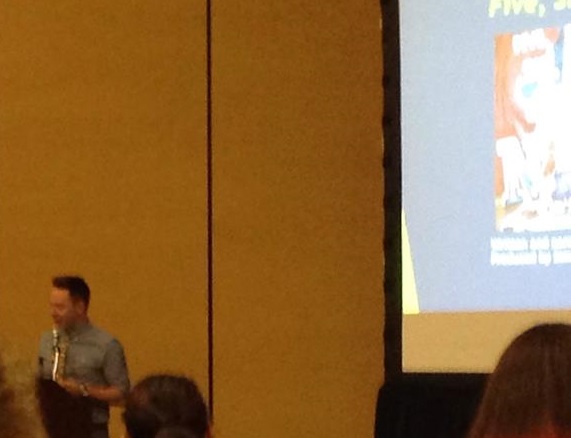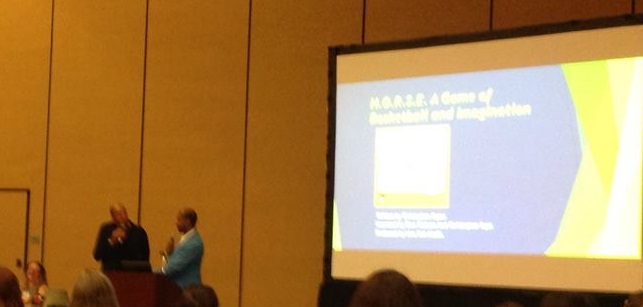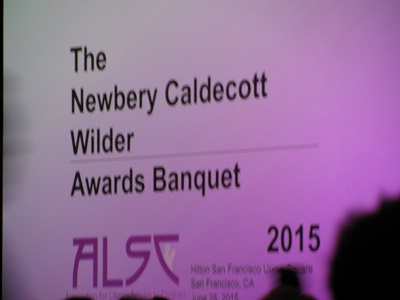All Hands on Tech
Explore, Play and Imagine Interactive Tech Time in Kids’ Library Programming
Rachel Nard, Mary Beth Parks, Amy Tooley from Carnegie Library of Pittsburgh
Children are growing up with a wide variety of tech that can support learning.
Not all tech is great. They did research.
Developed a plan, selected equipment, created app guidelines, integrated technology, evaluated the programs.
Build your case first. Look at community need.
Wanted to provide more than just access.
Wanted staff to communicate how they could support learning.
Wanted staff to be media mentors.
Began the project at locations where staff were comfortable with the technology.
Learned about best practices and research.
You can start small. It was scalable.
Developing a Plan
Looked at Fred Rogers Institute statement — was the basis for all their work.
Also used Littleelit as a resource.
Used ALSC resources related to digital media.
Set goals — wanted to create a tech team or a digital librarian position.
Wanted to have developmentally appropriate programs.
Identified outcomes and evaluation.
Researched equipment — selected iPads because of selected access.
Purchased an iPad, headphones, big grips for little hands, screen wipes.
Begin with a purchase, but start small.
Created App Selection Guidelines
Professional reviews
Recommendations/reputable sites
Cost & value
Use & accessibility
Approved App: Daisy the Dinosaur
Reviewed by SLJ. No ads. Free. User friendly. Easily integrated into existing programs. (Robotics program)
It’s a coding app.
Clean interface. Simple coding.
Unapproved App: Reading Rainbow
Peer recommendation. No ads. Fee-based beyond initial free download. User friendly. Easily integrated into existing programs. Ongoing pretty heavily fee-based.
Integrating technology: Programming
Created formal lesson plans for each program as they were starting out.
Very intentional about the use of iPads in the program.
Have used them in Early Literacy storytimes to many other programs.
Use them a lot during outreach.
After the program, check if the learning goals were met.
Program Exploration: Felt Board
Use in any way you’d use a physical felt board. You don’t have to cut out each piece.
Also works well for a storytelling app.
Always tells parents it’s not the app that helps the child learn, but the interaction with the parent that helps the child learn.
Always tell parents they need to be using apps with their child.
Make a Scene Farmyard (Free)
Good for a farm storytime. No gimmick or game, just putting animals in the farm.
Can be used during the storytime or give to families afterward. Always emphasize to parents what early literacy skills apps help.
Toca Robot Lab (school age)
STEM Super Science Program
With Pete’s Robot — ebook
Have used a Bee-bot — a basic, interactive robot
Toca Robot Lab has a maze to send the robot through.
Imagination Builders & Build and Play App
Works on drag and drop skills.
Gardening Thyme & Gro Garden App
Example: composting program and used Gro Garden app to explore how compost works.
Homeschool Explorations program & Leaf Snap app
Leaf Snap identifies leaves for you, with lots of info.
They’re trying to merge the creative with the analytical.
Summer Reading program and Word Girl app
Summer Reading Extravaganza and Code Fest
Had a technology tent with tech for all ages.
Hosted a CodeFest Jr. program
Used LittleBits.
Program Resource: Guided Access
Keeps the iPad locked on a single app.
Increases focus. Controls features. Password controlled. Timer function.
Program Evaluation
Based on evaluations, they did change some processes and accessories.
Phase 1: Did 470 programs reaching 10,597 children/caregivers.
Surveys throughout
Children’s Specialists Feedback
Planning for the future:
Ongoing professional development
Expanding use of technology
Seeking additional funding
Tips & Tricks:
Standardize passwords across all devices.
Choose iPad cases carefully.
Guided Access may be the key to your sanity.
Changed to Autobox cases. iPads are more durable than you’d think!
Managing devices takes longer than expected
Never underestimate the attraction of iPads for all ages.
Their website is carnegielibrary.org/kidstech
Evaluating programs made it easier to get funding.
They’re now using an app management system.



